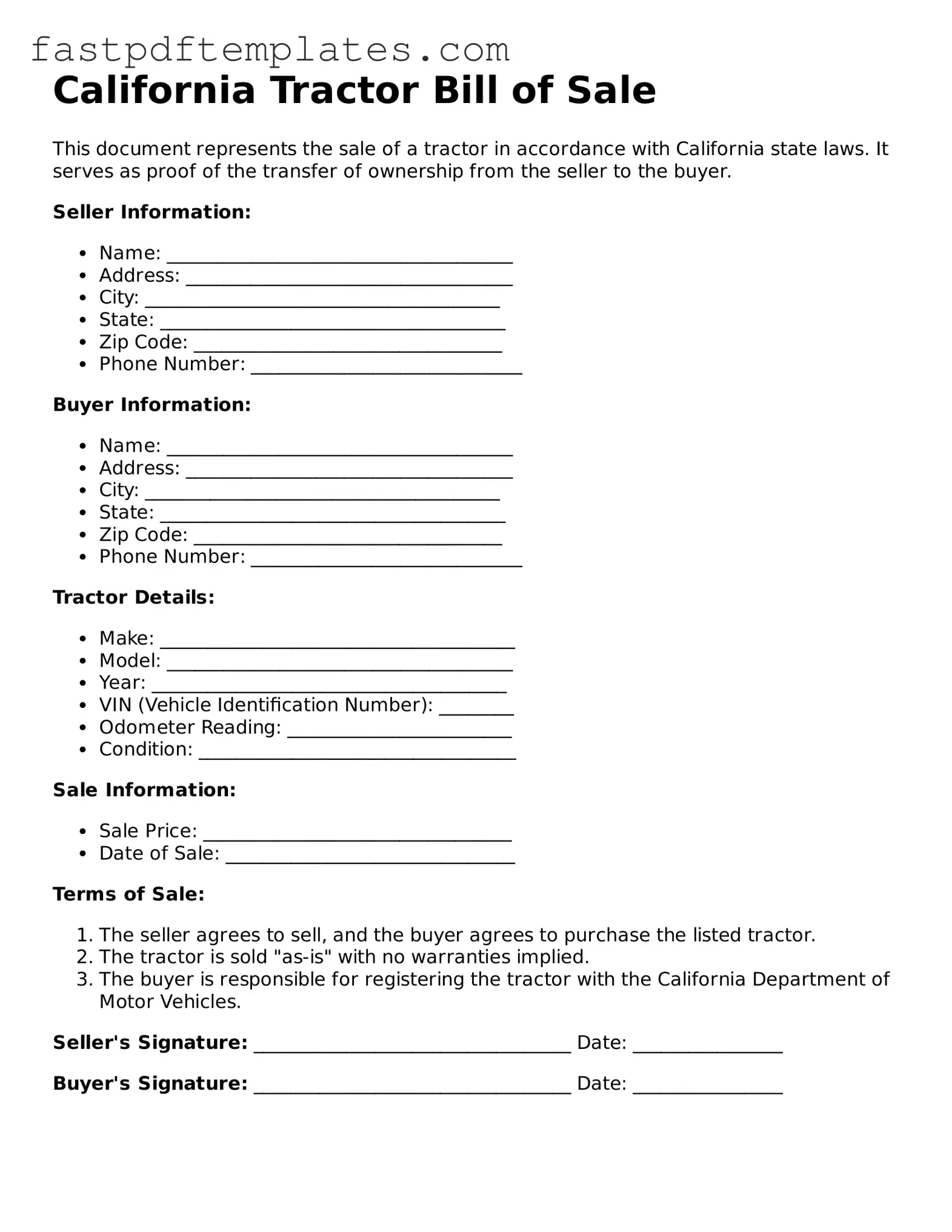The California Vehicle Bill of Sale serves a similar purpose to the Tractor Bill of Sale. Both documents are essential for transferring ownership of a vehicle or equipment from one party to another. They provide crucial details such as the names of the buyer and seller, a description of the vehicle or equipment, and the sale price. This form is often used for cars, trucks, and motorcycles, ensuring that both parties have a record of the transaction, which can be important for registration and tax purposes.
The Equipment Bill of Sale is another document that parallels the Tractor Bill of Sale. This form is specifically designed for the sale of various types of equipment, including construction machinery, farm implements, and industrial tools. Like the Tractor Bill of Sale, it includes pertinent information about the seller, buyer, and the equipment being sold. This ensures a clear transfer of ownership and can help protect both parties in case of disputes or future claims regarding the equipment.
The Motorcycle Bill of Sale is also similar in function to the Tractor Bill of Sale. It is tailored for the sale of motorcycles and includes essential details about the bike, such as its make, model, and Vehicle Identification Number (VIN). Just as with the Tractor Bill of Sale, this document serves to formalize the transaction, providing both parties with a record that can be referenced for registration and ownership verification purposes.
The Boat Bill of Sale shares similarities with the Tractor Bill of Sale as well. This document is used for transferring ownership of boats and watercraft. It contains details about the boat, including its hull identification number, and the transaction specifics. Both forms serve to protect the interests of the buyer and seller, ensuring that ownership is clearly documented and that any necessary taxes or fees are properly accounted for.
Lastly, the Personal Property Bill of Sale can be likened to the Tractor Bill of Sale. This document is broader in scope, covering the sale of various personal items, including furniture, electronics, and other tangible goods. While the Tractor Bill of Sale is specific to tractors and agricultural equipment, both documents provide a formal record of the transaction. They include the necessary details about the buyer, seller, and the items sold, helping to prevent misunderstandings and disputes in the future.
